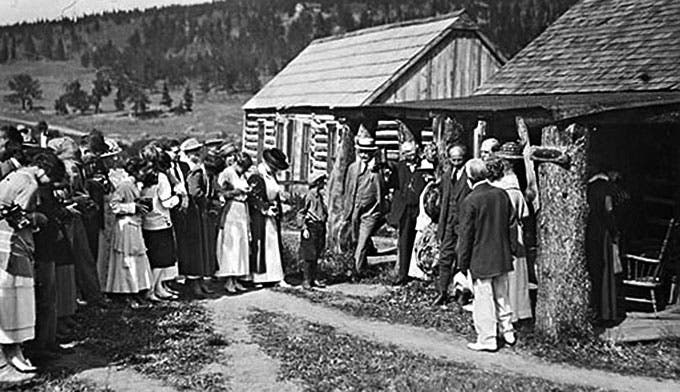Enos Mills, Father of Rocky Mountain National Park

'NPS' (Photo: NPS)
In 1885, barely old enough for whiskers worth a razor, 15-year-old Enos Mills of Kansas moved from the flatlands to Estes Park. That summer, he started building a cabin with a view of distant Longs Peak. Before completing the cabin, he had tagged the summit. Over the course of his life, he would make the trip nearly 300 more times.
But conquering mountains didn’t stir his spirit so much as sharing them. In his biography, Wild Life on the Rockies, Mills describes his favorite summit: guiding 8-year-old Harriet Peters. Peters spent the summers in Estes Park with family and had to obtain the permission of her aunt to take a shot at becoming the youngest person at that time to reach the top. Mills and Peters survived deep snow near the top and a slip on a boulder, but reach the top they did. On their return, Harriet declared, “Yes, I’m tired, but some time I want to go up by moonlight.”
In 1889, a chance encounter gave Mills new focus when he met famed conservationist John Muir on a California beach. Muir had been advocating strongly for federal protection for Yosemite, and at the time was in the final stages of his campaign (Yosemite became a national park by an act of Congress in 1890). Muir inspired Mills to do the same for his beloved Rockies.
Mills returned to Colorado to continue guiding Longs Peak, and in 1901, bought a ranch at the base of the mountain. He called it Longs Peak Inn, and it became the launching point for most climbers seeking to tackle the summit; Mills also offered guided nature walks in the area for visitors.

By then, Mills had also added writing and lecturing about the importance of protecting the mountain wilderness to his workload. He traveled across the country giving speeches; among his audiences were the Sierra Club and Daughters of the American Revolution, both practiced in working with the federal government. With the help of those organizations and other supporters, Mills saw his dream realized when Congress established Rocky Mountain National Park in 1915—seven years before his death at age 52. Thanks to his tireless advocacy, The Denver Post gave him the honorary title of “Father of Rocky Mountain National Park.” Today, travelers can still visit his homestead cabin 8 miles south of Estes Park.